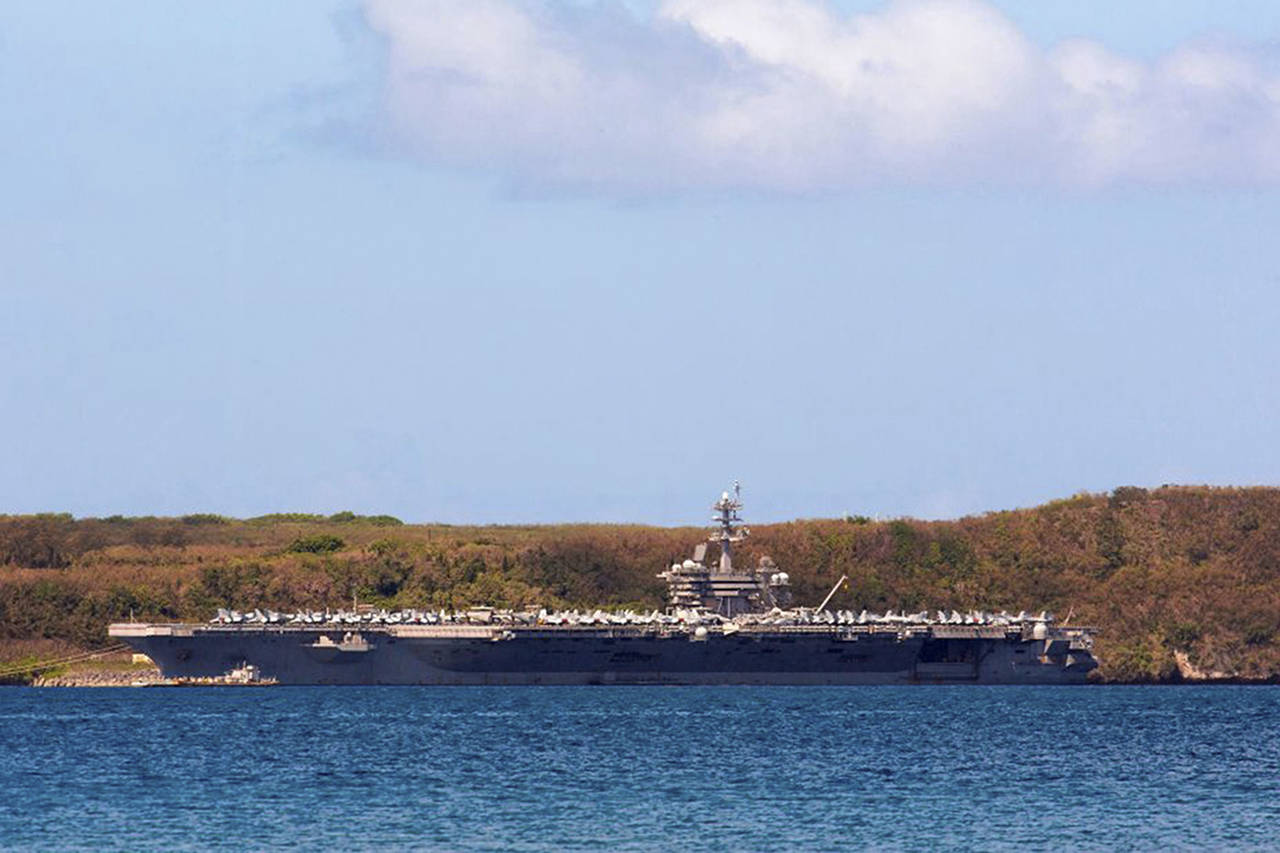WASHINGTON — Even before the pandemic hit the service hard, the U.S. Navy was in rough seas.
The lingering aftermath of two deadly collisions in 2017, constant leadership turnover, and pressure from just about everyone in Washington to expand the fleet quickly and considerably found the Navy struggling to articulate its vision for its future.
Then novel coronavirus outbreaks took two battle force ships out of commission, including one of the four aircraft carriers based in the Pacific. The Navy fired the ship’s captain after his plea for more action from his superiors became public, the acting Navy secretary resigned after criticizing the fired captain to his crew, and one crew member died from COVID-19.
But even among the outcry over the handling of the outbreaks on the USS Theodore Roosevelt and the guided-missile destroyer USS Kidd, a silver lining has emerged for the Navy. Just as it did after the attacks of 9/11, the country will likely reevaluate what national security means post-pandemic, and what role it expects the military to play in keeping society safe.
This reckoning offers the Navy a chance to reset its priorities and plot any needed course corrections.
“The only time you get to do these big rethinks are in extraordinary times,” said Ray Mabus, who served as Navy secretary in the Obama administration. “I don’t like to use the word ‘opportunity’ in the midst of a crisis, but it is the one chance you have to rethink some fundamental things. I hope that the Navy will take that opportunity.”
The new vulnerability exposed by the coronavirus —that a single infected person could neutralize a multibillion-dollar asset for months —only added to the list of challenges facing the Navy.
The 2018 National Defense Strategy, which calls for renewed focus on near-peer adversaries China and Russia, piled additional obligations on a service that is already stretched thin. To carry out its set of missions, the Navy projects it will need a fleet of at least 355 ships (up from the current complement of just under 300), and Congress agrees.
In addition, the Navy is committed to updating its submarines armed with nuclear missiles, a foundational element of U.S. defense policy. Last year, a report from the Government Accountability Office concluded that the Navy’s projected cost of $115 billion to build 12 new Columbia-class submarines was overly optimistic.
And if it wants to integrate unmanned vehicles of significant size into the fleet, an option made more attractive by the shipboard outbreaks, the Navy needs a more sophisticated, integrated network to operate them.
All of this will require tremendous amounts of money. And there is already talk in Washington about “constrained” defense budgets being a likely consequence of Congress’ pandemic recovery spending.
“Debt was on the rise before the pandemic, and now it’s getting worse,” said Susanna Blume, director of the Center for a New American Security’s defense program. “A reckoning is coming for defense spending, probably not in the 2021 cycle, maybe not in the 2022 cycle, but certainly in 2023.”
The Navy’s last Force Structure Assessment, a 2016 analysis, established the 355-ship goal, which Congress subsequently enshrined in law. But the service has made little headway. Earlier this year, then-acting Navy Secretary Thomas Modly said the Navy wouldn’t reach its target until 2030.
The Navy had been working on a new analysis, which Modly said previously would be ready in January but has yet to materialize. Defense Secretary Mark T. Esper told members of the House Armed Services Committee Feb. 26 that he had questions about the Navy’s own analysis, and he wanted his office to review it.
Defense officials have reportedly hinted that the new plan, which is now expected sometime this summer, could call for a fleet of 390 ships, plus an additional 45 unmanned autonomous systems.
But even reaching the more modest goal of 355 ships seems prohibitively expensive. The Congressional Budget Office estimated the Navy would need to spend an average of $28.8 billion a year for three decades — $865 billion total — on shipbuilding alone to hit the target. The Navy’s own projections put that number at $22 billion a year, or a total of $660 billion.
Driven by necessity, the Navy has already changed some of its operations, said Bryan Clark, a senior fellow at the Hudson Institute and retired submarine officer who is advising Esper on the latest assessment. With the Roosevelt unavailable, the Navy has used smaller ships to show force and maintain presence in the western Pacific, he said.
“Part of that is the Navy trying to demonstrate to China that COVID-19 has not caused the Navy to go home and stay home,” he said. “It’s still out there pressing American interests.”


